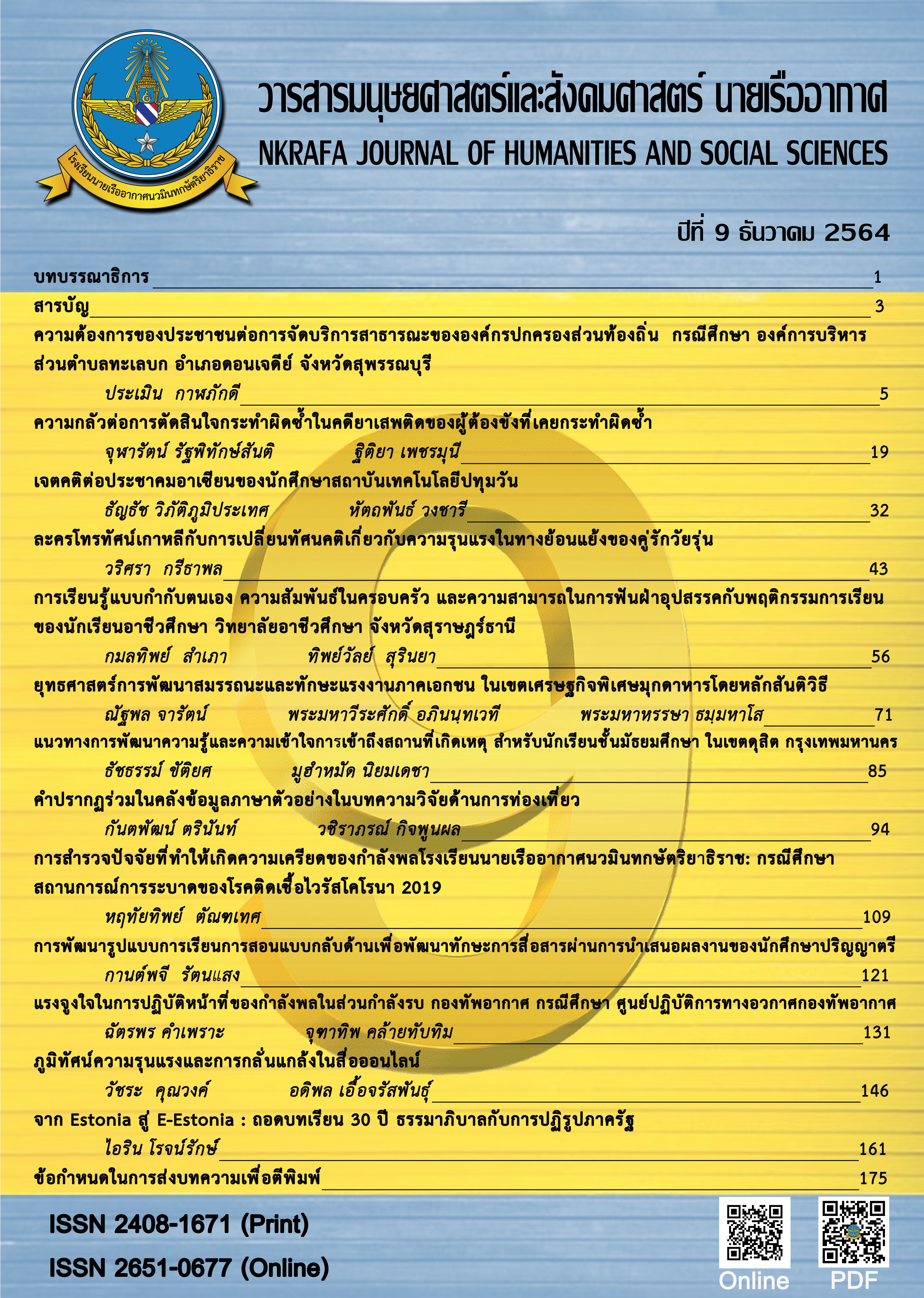From Estonia to E-Estonia: A 30-years Lesson in Governance and Government Reform
Main Article Content
Abstract
This academic article aimed to present why the Republic of Estonia was a small country located in Northern Europe close to Finland and Russia. Which had a total population of just 1.3 million people and the Republic of Estonia used to be under the rule of communism and separated from the Soviet Union in 1991. When 30 years have passed, a country that was 10 times smaller than Thailand. They evolved to be a developed country then they have gotten as one of the most advanced digital economy societies in the world. So obviously that the historical background contributed to the building of Estonia's bureaucracy. And bringing digital innovations to develop the country by leaps and bounds. In addition, the country’s leaders had a long-term vision that was making it possible to see the importance of the development of the bureaucracy to keep up with the current world.
Article Details
บทความที่ได้รับการตีพิมพ์เป็นลิขสิทธิ์ของวารสารมนุษยศาสตร์และสังคมศาสตร์ นายเรืออากาศ
ข้อความที่ปรากฎในบทความแต่ละเรื่องในวารสารวิชาการเล่มนี้ เป็นความคิดเห็นส่วนตัวของผู้เขียนแต่ละท่าน ไม่เกี่ยวข้องกับโรงเรียนนายเรืออากาศฯ และคณาจารย์ท่านอื่น ๆในโรงเรียนนายเรืออากาศฯ แต่อย่างใด ความรับผิดชอบขององค์ประกอบทั้งหมดของบทความแต่ละเรื่องเป็นของผู้เขียนแต่ละท่าน หากมีความผิดพลาดใด ๆ ผู้เขียนแต่ละท่านจะรับผิดชอบบทความของตนเองแต่เพียงผู้เดียว
References
Tech Republic, “How Estonia became an e-government powerhouse,” [Online]. Available: https://www.techrepublic.com/article/how-estonia-became-an-e-government-powerhouse/. [Accessed: 1 April 2021].
Max Weber, From Max Weber : Eassay in Sociology, New York, Oxford, 1985.
ปกรณ์ ศิริประกอบ, 3 พาราไดม์ทางรัฐประศาสนศาสตร์ : แนวคิด ทฤษฎี และการนำไปปฏิบัติจริง, กรุงเทพฯ: สำนักพิมพ์แห่งจุฬาลงกรณ์มหาวิทยาลัย, 2558.
B. Bowornwathana, “Transforming Bureaucracies for the 21st Century: The Democratic Governance Paradigm”, Public Administration Quarterly, 21(3), 294-308., 1997.
Ceicdata, “View Estonia's Household Income per Capita from 2008 to 2019,” [Online]. Available: https://www.ceicdata.com/en/indicator/estonia/annual-household-income-per-capita. [Accessed: 1 April 2021].
รัฐกร พูลทรัพย์, “ระบบรัฐบาลดิจิทัลของสาธารณรัฐเอสโตเนีย,” [Online]. เข้าถึงจาก https://mgronline.com/daily/detail/9610000065176. [Accessed: 2 เมษายน 2564].
รณดล นุ่มนนท์, “แนวทางการใช้ประโยชน์จากการบูรณาการข้อมูลจัดตั้งคลังข้อมูลแห่งชาติเพื่อเพิ่มขีดความสามารถในการแข่งขันทางเศรษฐกิจ,” รายงานวิจัย, วิทยาลัยป้องกันราชอาณาจักร, กรุงเทพฯ, 2561.
Republic of Estonia Information System, “X-ROAD FACTSHEET,” [Report]. Available: https://www.ria.ee/sites/default/files/content-editors/publikatsioonid/x-road-factsheet-2014.pdf . [Accessed: 2 April 2021].
e-Estonia , “e-Government in Estonia,” [Online]. Available: https://e-estonia.com/solutions/e-governance/. [Accessed: 2 April 2021].
Viljar Lubi, “เล่น เห็น โลก: ท้าทายอนาคต สร้างโอกาสใหม่ให้ประเทศ,” [Online]. Available: http://www.okmd.or.th/knowledge-festival/articles/844/ [Accessed: 2 April 2021].
Estonian Ministry of Economic Affairs and Communications and Microsoft Corporation, “Implementation of the Virtual Data Embassy Solution,”. [Online]. Available: https://www.mkm.ee/sites/default/files/implementation_of_the_virtual_data_embassy_solution_ summary_report.pdf, 2015. [Accessed: 3 April 2021].
ณรจญา ตัญจพัฒนกุล, “อ่านเอสโตเนียและบอลติก กับ วศิน ปั้นทอง” [Online]. Available: https://www.the101.world/wasin-punthong-interview-estonia/. [Accessed: 3 April 2021].


